Approved by Dr. Luqman Javed
If you have chickens, you might wonder just what it takes to hatch some eggs at home. It can turn out to be cheaper than a hatchery long-term, making replenishing your flock easy and inexpensive. However, many hens aren’t typically broody, meaning they won’t lay to hatch the eggs.
If you don’t have a particularly broody hen, you don’t have many alternatives—unless you take the plunge and buy or make a brooder. Let’s discuss how to successfully hatch chicks at your home without a traditional incubator.

How Are Eggs Hatched?
Chicken eggs are dormant until the incubation process begins. Most of the time, this heat comes in the form of a broody hen who takes ownership of the eggs and decides to sit. However, it sometimes requires an incubator, a specifically designed heating system that mimics the hen’s body heat and humidity.
Once the incubation process starts, chicks will emerge from their eggs about 21 days later.
Can You Force a Hen to Hatch Eggs?
If a hen shows no signs of broodiness, you should never attempt to force her to sit. Putting her in confinement will only confuse her. She might even break the eggs.
The eggs require a consistent heat source, so most broody hens are ever-faithful, sitting there throughout the process for up to 23 hours per day. However, there is no surefire way to ensure the success of a broody hen until they prove themselves.

What Is an Egg Incubator?
An egg incubator is a device that maintains the proper temperature, turning, and humidity levels necessary to hatch eggs. Each device will vary depending on quality and needs. Because it combines different factors to create a perfect environment for the eggs, the consistency has a high hatch rating.
Of course, factors can play into successful hatching based on a few things:
Quality
Egg incubators aren’t cheap, and prices can vary tremendously. There are some you can make yourself and others you buy from manufacturers. If the incubator is of poor quality, it might not function properly, causing interruptions in the cycle.
User Error
Not everyone is a pro right away. You might think you followed all instructions only to wind up at day 23, still no chicks. The only thing you can do is learn from experience and make sure you follow all recommendations depending on the method you choose to hatch.
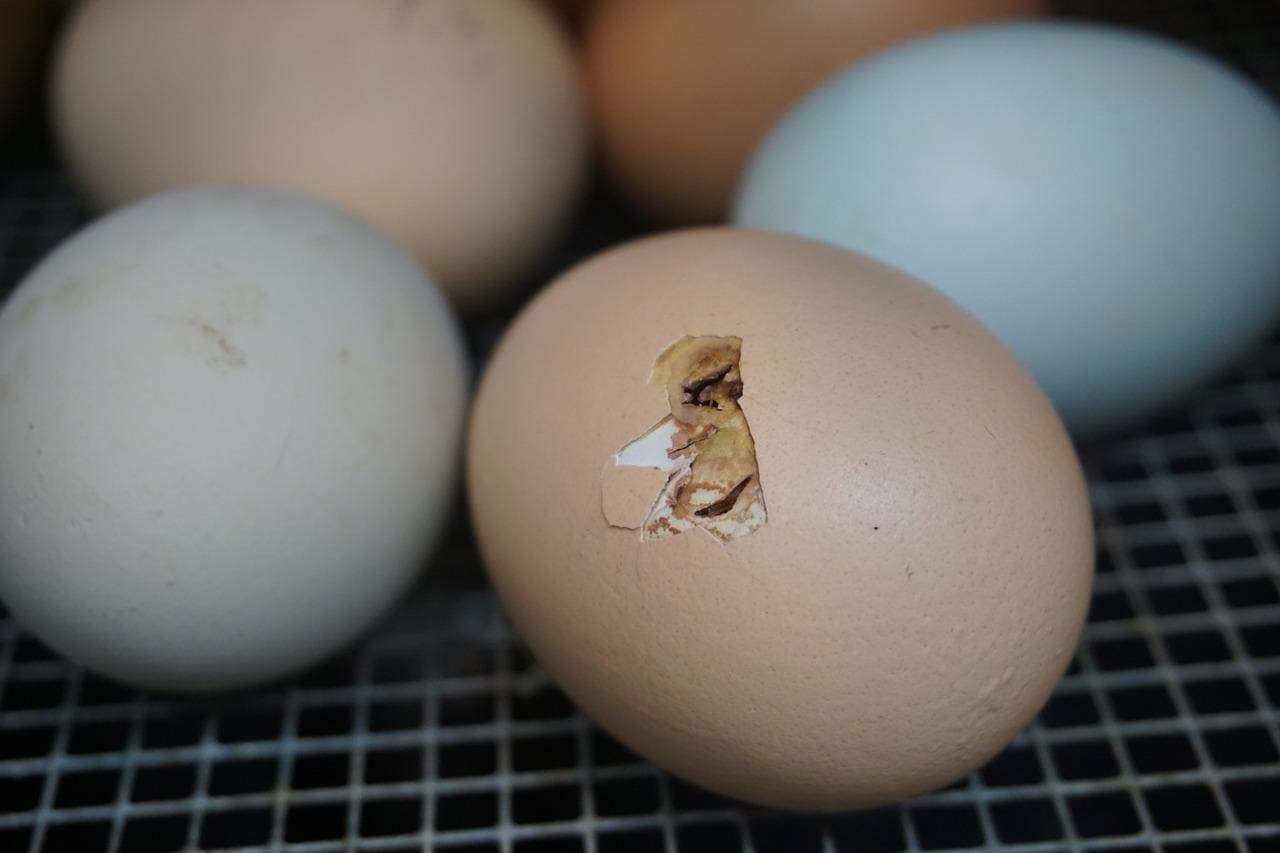
Egg Fertility
Of course, to hatch eggs, you need a fertilized and developable embryo. If you gathered up some eggs from the coop and some weren’t fertilized, you might end up with a few duds after the rest hatch.
Power Malfunction
It’s essential to keep every environmental factor entirely consistent. If there’s ever a power outage, even for brief intervals, it could interrupt development. Make sure to keep an eye on the power source, so you know that they are getting appropriate heat at all times.

Ways to Incubate Eggs
Unfortunately, there’s no way to hatch eggs without a proper incubator or willing hen. But don’t let that deter you. You can always buy one. Or maybe better and cheaper—you can make one yourself!
1. Broody Hen
It goes without saying that a broody hen is an ideal way to hatch chicks. It’s completely natural with perfect rhythmic flow between hens and their growing embryos. However, you might have a whole flock of hens that couldn’t care less about being broody at all.
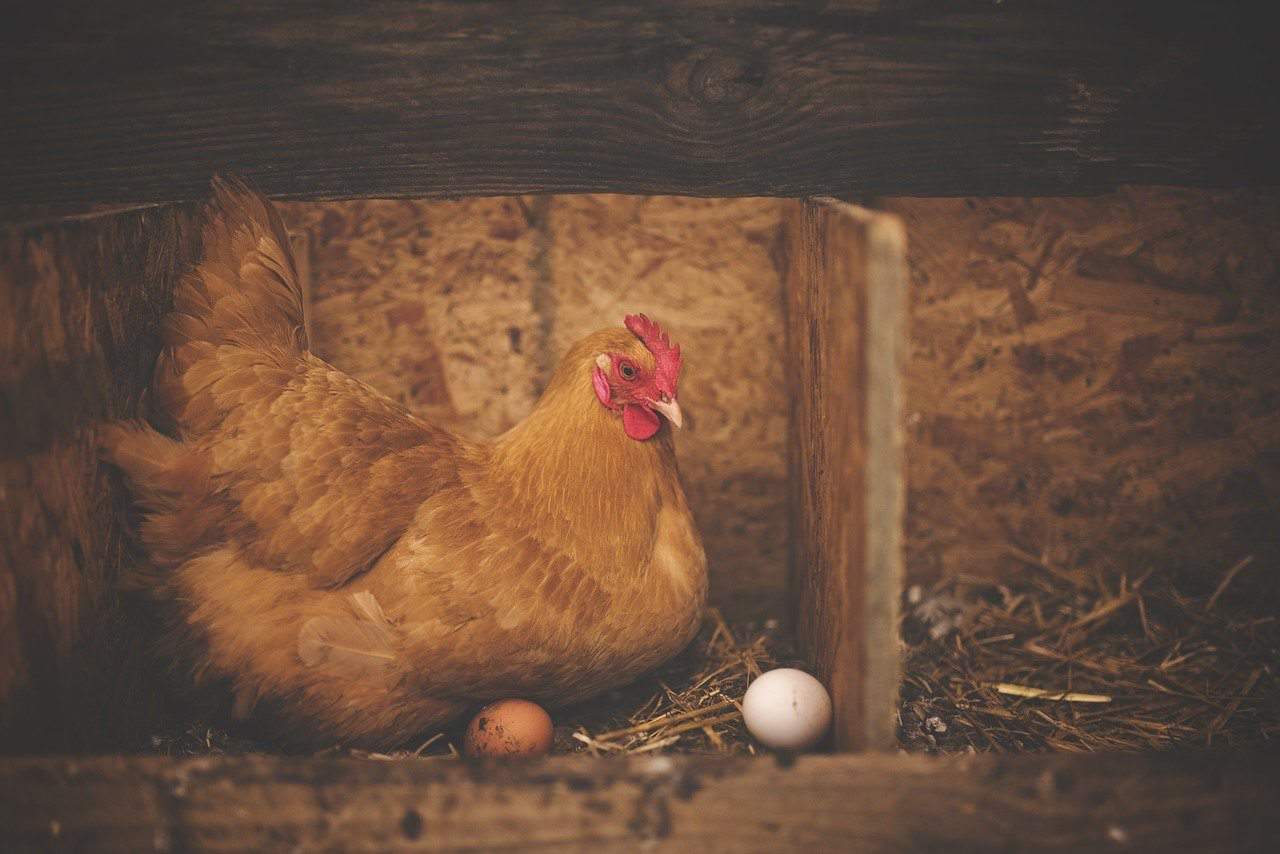
If you want to gather up some hens with a high potential for broodiness, add some of these beauties to your flock:
Silkie
Of all the chicken mamas out there, Silkies have the best reputation for their optimal motherly instincts. Also, Silkies look so cool! These chickens are fluffy balls of white downy feathers. They are sweet and personable, getting along with flock mates and humans alike.
Orpington
The docile Orpington is a top egg producer, and they can also be very broody when the mood strikes. Good mothers, these girls will tend to their babies with minimal issues. Orpingtons come in beautiful buff, lavender, white, and black. They are very even-tempered and calm, too.
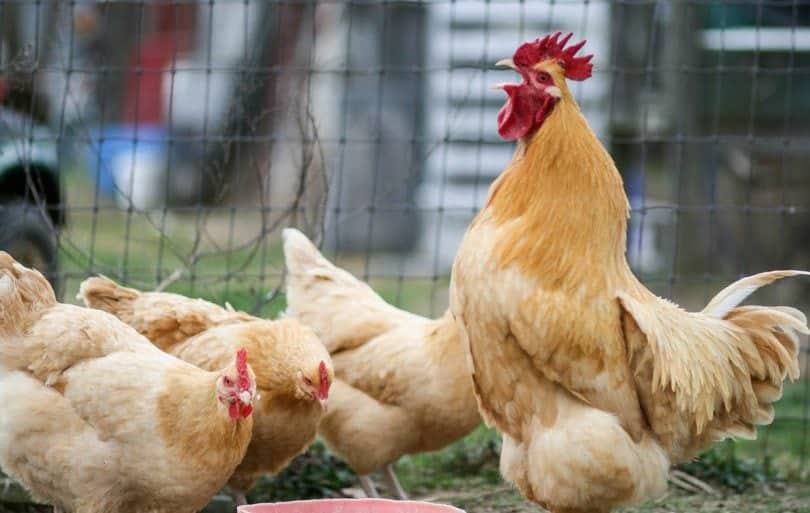
Brahma
The big mama Brahma might come to save the day! This giant chicken breed might be large, but she is sweet as sugar. They have a very high potential for broodiness. Brahmas are known for their gorgeous foot feathering and massive size, coming in buff, white, and dark coloring.
Sussex
The cute speckled Sussex hen is an adorable addition to your flock—and they have a very strong inclination to sit on eggs. These hens come in eight interesting colors, including brown, buff, coronation, white, light, red, speckled, and silver. These chickens are very alert and non-temperamental.
Cochin
Closely resembling their Brahma cousins in stance and character, the Cochin is a charming flock mate with a reputation for broodiness. These easy-going hens come in tons of fascinating colors and patterns, putting some pizzazz into your barnyard.
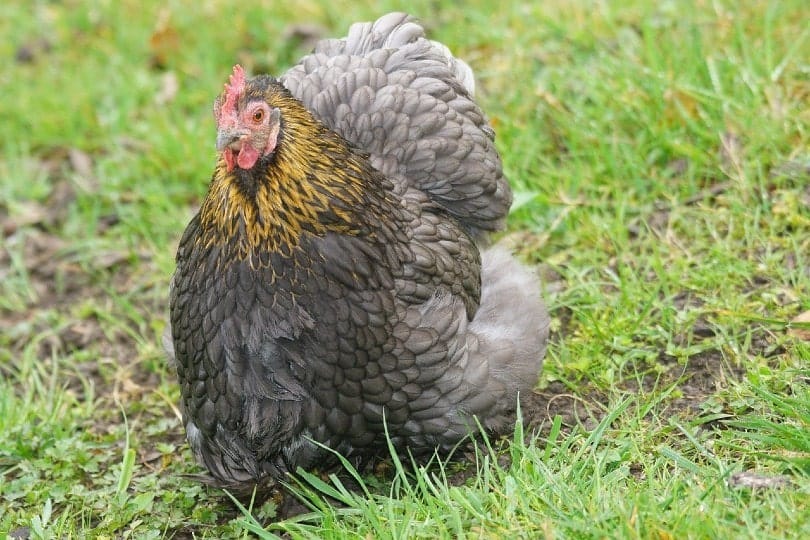
Australorp
Anyone who has ever owned an Australorp will attest to their fun, interactive personalities. In addition to their friendly nature, they also are much more inclined to be broody. These chickens come mainly in black, but they might also be white or lavender.
Rhode Island Red
Not only are Rhode Island Reds the queen layers of the henhouse, they are also among the broodiest. This classic-looking chicken might be one of the most recognizable breeds of poultry you see on farms. Reds are gentle and agreeable, but males can be downright rowdy—so careful picking.

When Will Hens Go Broody?
There is not much you can do to predict broodiness in an individual hen before they begin to lay. Most broody hens start sitting on eggs shortly after laying legs between 5-8 months old.
Once they reach this age, they will go broody after they’ve laid a clutch and if they feel like having chicks. They usually do so in the spring or summer.
Signs That You Have a Broody Hen
You can encourage broodiness by leaving a few eggs in the nesting boxes at a time. You might even buy artificial eggs that mimic the real thing to trigger her instincts.
- Refusal to get off the nest of eggs
- Sitting on an empty nest
- Aggression or irritation when disturbed
- Slightly pale combs and wattles
- She plucks off some feathers from her breast
- Do not disturb her
- Give her a secluded spot away from other hens
- Give her plenty of food and water
Because some broody hens refuse to leave their nest, you must make sure she gets one solid meal per day. Fresh water should be available at all times.
As long as she has her basic needs met and is safely away from others, you will likely have a successful hatch.
It is important to ensure she gets up at least once a day for some time to relieve herself, eat, and drink.
2. Homemade Incubator
It might surprise you to know that you can make a homemade DIY incubator with many supplies you might already have on hand. You have a lot of creative freedom with the design, but the incubator needs to be efficient in temperature and humidity.
- Thermometer
- Hydrometer
- Heat lamp
- Incandescent light bulbs
- Screen or hardwire cloth
You can make the actual box out of scrap wood, plastic totes, or Styrofoam boxes. Make sure to measure out the incubator so that the heat source is not too close or too far from the eggs. You’ll also need a plastic bowl to put water in to keep humidity where it should be.
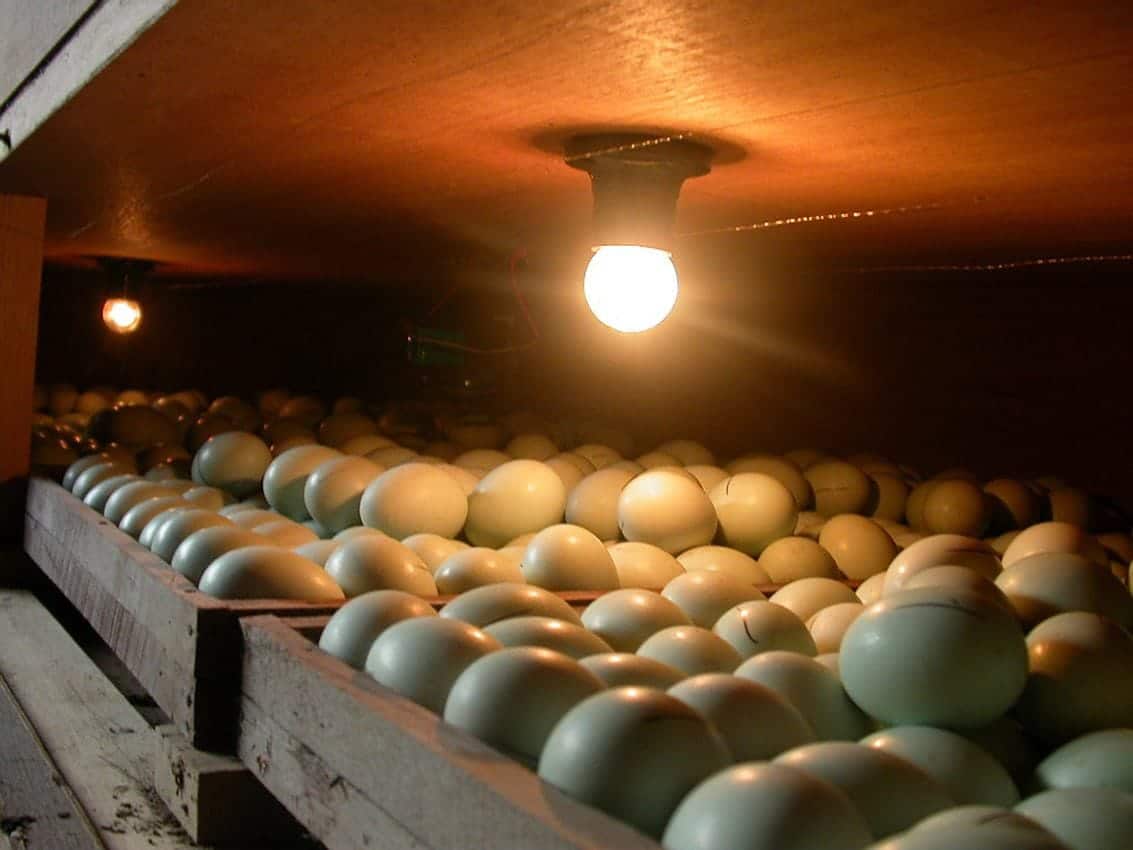
How to Use an Incubator
The incubator (if it is without a fan blowing air) should be between 100.5 – 101.5°F (38 – 38.6 °C) with 60% humidity.
Once you have the incubator set up with the correct heating and humidity, it’s time to set the eggs inside to begin the process.
- Carefully lay eggs inside of the incubator in even spaced spots
- Turn the eggs four to six times per day
- Inspect for cracks, breaks, or fissures in the eggs
- Identify spoiled or infertile eggs from day 5 of incubation onwards
- Remove any spoiled eggs as the process moves along
- Check temperature and humidity regularly
- Stop turning 3 days before hatching should occur
- Reduce temperature to 95 °F (35 °C) after hatching
Allow each chick time to dry before moving them out of your homemade incubator.

FAQs
How often do you need to turn eggs while incubating?
You will need to turn eggs four to six times per day. By 18 days, stop turning the eggs completely. Most eggs will hatch on day 21.
What are common mistakes people make when incubating eggs?
If you’re new to the concept of incubating eggs, you might make a few mistakes. These typically include:
- Forgetting to turn the eggs
- Inconsistent temperatures
- Improper storage for fertilized eggs before incubation
- Thin or fissured shells
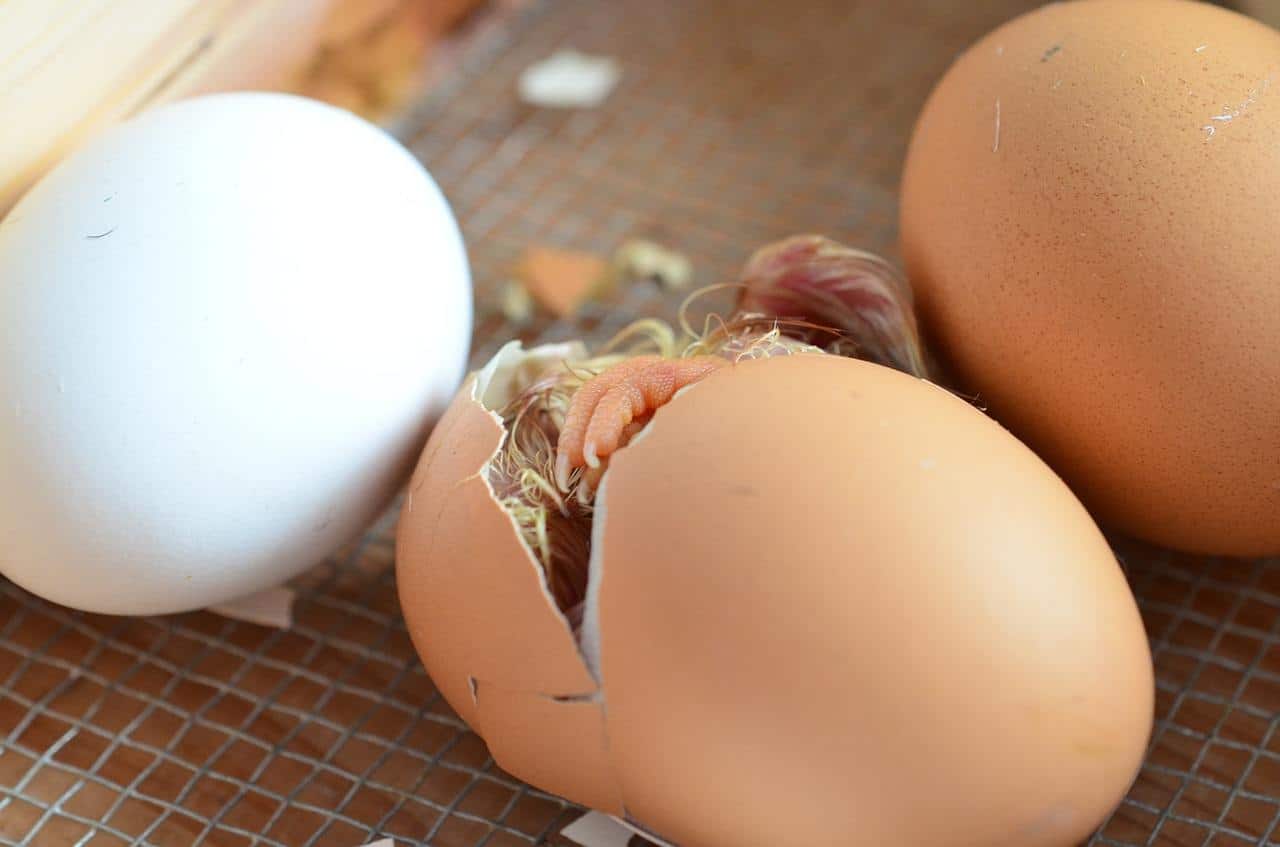
How soon after hatching can chicks be with the flock?
Once your little chicks spring to life, they will need to stay in the incubator to dry completely. Once the chicks are completely dry, you can place them in a prewarmed brooder where they will spend the next 8 weeks of their life. After 8 weeks, you can introduce the chicks to the flock.
Is incubating a time-consuming task?
Yes, incubating eggs is time-consuming but rewarding. It is also an alternative to buying chickens from hatcheries if you plan to keep a consistent flock.

Wrapping Up
Unfortunately, we humans don’t have the capability of hatching eggs without help. You need to have all the relevant environmental factors at work to hatch eggs—no cutting corners! Even one mishap can render the development fruitless.
So, if you don’t want to pay for an incubator, invest in some broody hens instead. You might have to wait a little longer to wind up with baby chicks, but you can always build your own DIY incubator and provide a warm space for your newest flock members.
- Related Read: Can You Hatch a Store-Bought Egg?
Featured Image Credit: Rob Croukamp, Shutterstock
